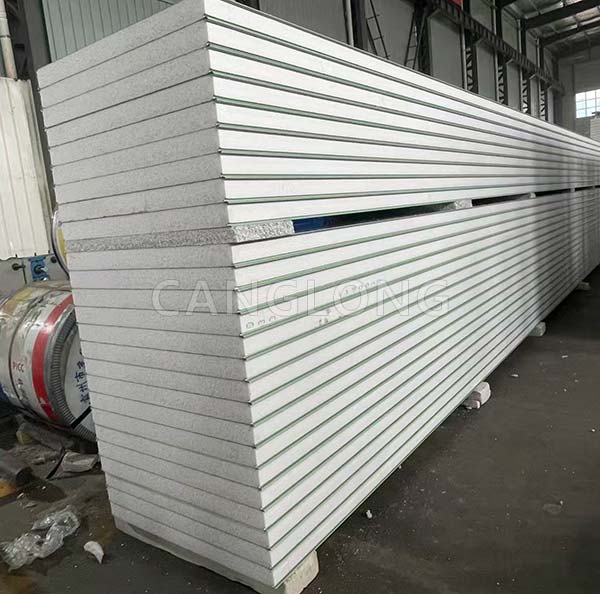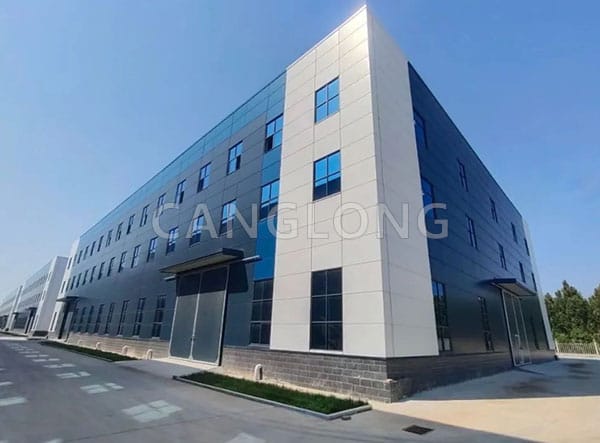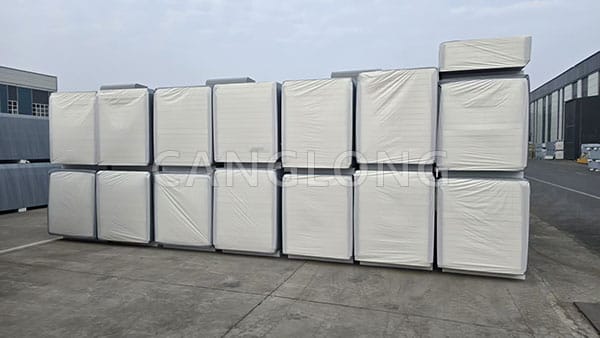How can insulated sandwich panels replace brick-and-concrete walls?
In the construction of industrial plants, a silent revolution in building envelope systems has already taken place, with traditional brick-and-concrete walls rapidly being replaced by modern insulated sandwich panels. This is not merely a simple material replacement, but a comprehensive upgrade of building concepts from traditional and inefficient to modern and efficient.

I. Insulated Sandwich Panels vs Traditional Brick-and-Concrete Walls
We compare them from several dimensions of primary concern for industrial plants:
| Aspect | Insulated Sandwich Panel (EPS/Rock Wool/PU Panel) | Traditional Brick-Concrete Wall |
|---|---|---|
| Construction Speed | Very Fast. Factory pre-fabricated, only requires assembly on-site. Thousands of square meters can be installed in a week. | Very Slow. Requires multiple steps: bricklaying, plastering, curing, taking months. |
| Structural Load | Very Light. Self-weight is only 1/10~1/30 of a brick wall, significantly reducing the load on the primary structure, allowing for optimized beam/column sizes and steel savings. | Very Heavy. Significant self-weight imposes high demands on the foundation and primary structure. |
| Thermal Insulation | Excellent. Very low thermal conductivity (k-value), providing highly efficient insulation for a stable indoor environment. | Very Poor. Pronounced thermal bridging effect, requires an additional external insulation layer, which is complex and prone to detachment. |
| Aesthetic Appearance | Modern & Aesthetic. One-time forming, rich color options, flat facade, requires no secondary finishing. | Traditional & Monotonous. Relies on external paint or tiles, offers limited aesthetics and ages poorly. |
| Economic Efficiency | Lower Comprehensive Cost. While unit material cost may be higher, it saves on foundation, structural framing, construction time, and management costs, leading to a short payback period. | High Hidden Costs. Ongoing accumulation of material, labor, time, and later energy consumption costs. |
Through comparison, it’s easy to see that the disadvantages of brick-and-concrete walls in industrial buildings are precisely the advantages of insulated sandwich panels.

II. How is the Replacement Achieved?
The replacement of brick-and-concrete walls essentially transforms the traditional bricklaying and plastering processes of construction into modern prefabricated installation.
Design Integration:
Brick-and-Concrete Structure: The walls are load-bearing structures with high design rigidity.
Sandwich Panel System: The walls are only part of the enclosure system, designed in conjunction with the main steel structure (beams, columns, purlins). Designers have greater freedom in planning door and window placement and panel segmentation, achieving optimal visual appeal and functional layout.
Revolutionary Construction Process:
- Traditional Process: Foundation → Main Structure → Bricklaying → Interior and Exterior Wall Plastering → Exterior Wall Insulation → Exterior Wall Decoration.
- Sandwich Panel Process: Foundation → Steel Structure → Direct Installation of Sandwich Panels (One-step process, completing enclosure, insulation, and decoration).
This shift frees wall construction from severe weather and seasonal constraints, enabling rapid factory enclosure and facilitating internal equipment installation and cross-operation.
III. In-depth Analysis Based on Actual Industrial Plant Conditions
The advantages of insulated sandwich panels are amplified in the specific environment of industrial plants:
- Addressing the Need for Rapid Production: For manufacturing companies, time is money. Sandwich panel construction can shorten the construction cycle by several months, allowing factories to start production and generate profits sooner, which is crucial for companies to seize market share.
- Significant Energy Savings and Consumption Reduction: Industrial plants have vast spaces, and heating and cooling energy consumption constitutes a major portion of operating costs. The superior insulation performance of insulated sandwich panels effectively reduces heat exchange between indoors and outdoors, blocking heat in summer and locking in warmth in winter, directly saving businesses substantial electricity costs. Typically, the energy savings within 2-3 years can offset the initial investment difference compared to brick walls.
- Meeting Cleanliness and Environmental Requirements: For food, pharmaceutical, and electronics plants, the smooth surface of sandwich panels does not accumulate dust and is easy to clean, meeting high cleanliness standards. Furthermore, its dry construction method reduces construction waste and on-site dust, making it more environmentally friendly.
- Flexible Adaptability to Process Adjustments: Modern factory production lines frequently require updates or adjustments. Sandwich panel walls are easy to disassemble and reassemble, providing great flexibility for future upgrades and renovations, whereas brick-and-mortar walls, once built, are extremely costly to modify.

IV. Conclusion
In the industrial plant sector, the replacement of brick-and-mortar walls with insulated sandwich panels is no longer just an option, but a trend. It doesn’t simply function as a wall; rather, it’s an integrated solution combining structural envelope, high-efficiency insulation, and building exterior finish.
The value of this alternative is systemic: faster return on investment, lower operating costs, a better working environment, and a more modern corporate image. For any industrial project seeking efficiency, cost-effectiveness, and control, choosing insulated sandwich panels means choosing a more advanced, economical, and sustainable construction path.
